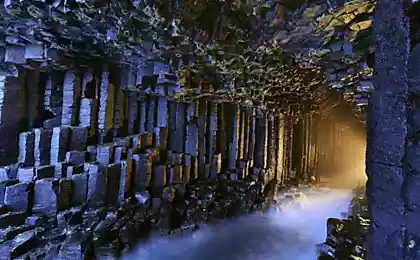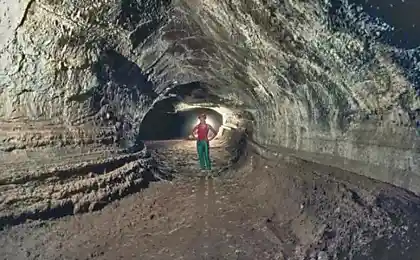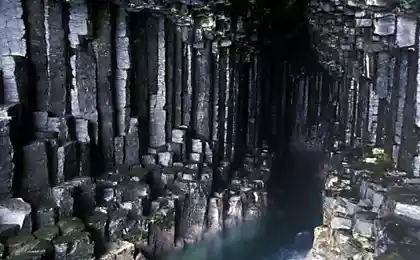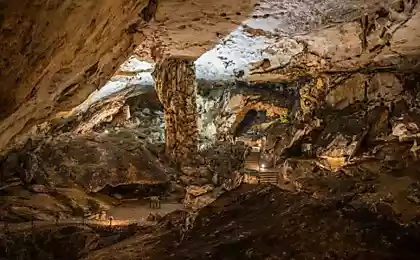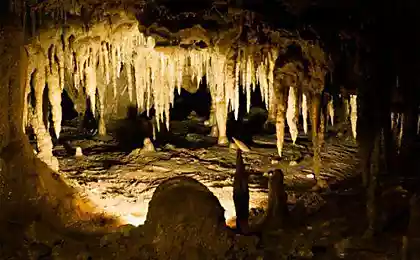1185
Fingal's Cave
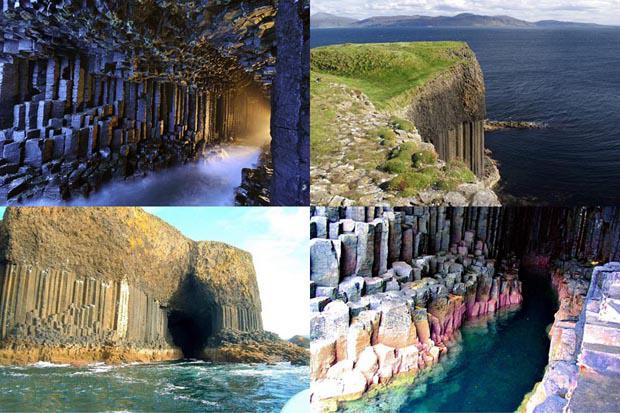
This famous sea cave is located on a small island of Staffa, which lies near the Scottish coast UK. The island has a total length of 1 kilometer and half a kilometer wide. Endless rains and the waves were drilled on this small piece of land the whole cave system. The biggest of them was named after the giant Fingal - Irish hero eposa.
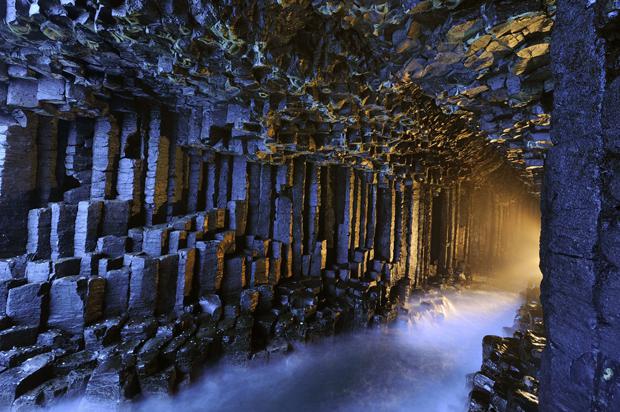
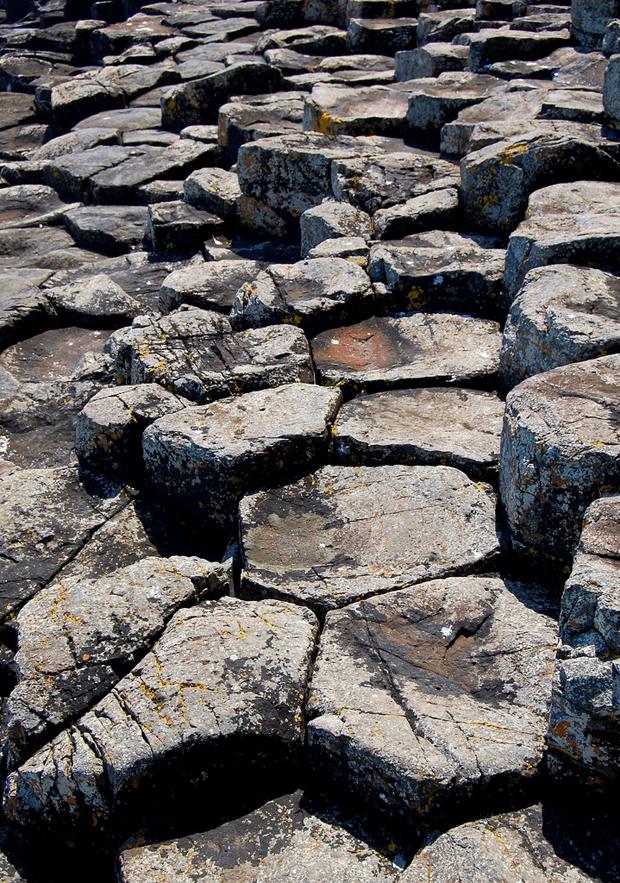
Staffa Island - the smallest island in the Inner Hebrides entering the island. Its total area is 33 hectares and the highest point above sea level rises of 42 meters. The island became famous in 1722 when he visited the famous English naturalist Dzhazef Banks (1743 - 1820), who described the cave Fingala.
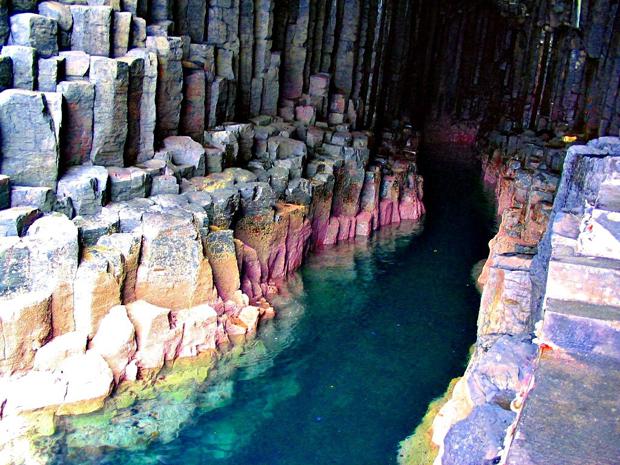
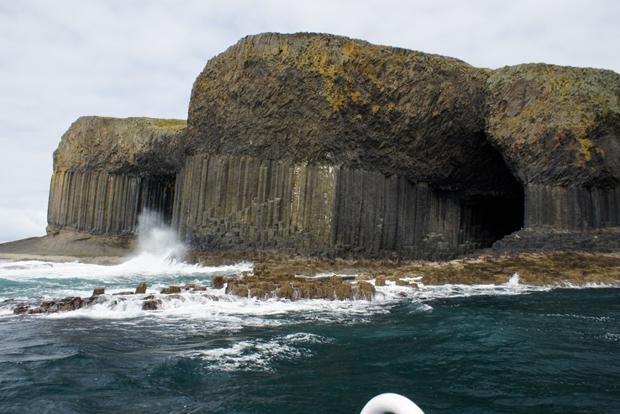
One of the most striking features of the island of Staffa, which immediately catches the eye is the natural basalt columns, surprisingly correct form. Most of the columns are 6 hexagon shape, but there are 3-sided and 8-sided. This unusual form they have acquired through the long process of crystallization of volcanic lavy.
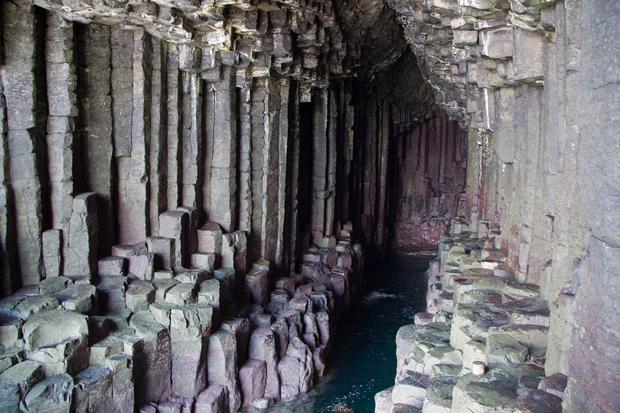
The main hall of the cave of Fingal has a length of 75 meters, a width of 20 m and a height of 14 m. In Gaelic this cave called Ouham-Bin (Cave tunes). Named in honor of the epic hero Fingal (Finn McCool) Cave has received from Scottish poet James Macpherson. According to Irish legend giant Fingal built a causeway connecting Scotland and Irlandiyu.
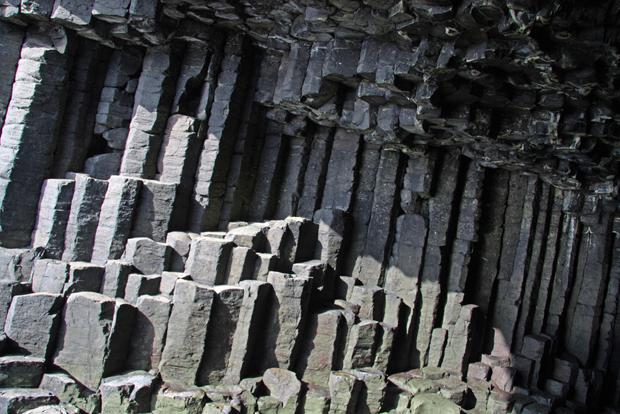
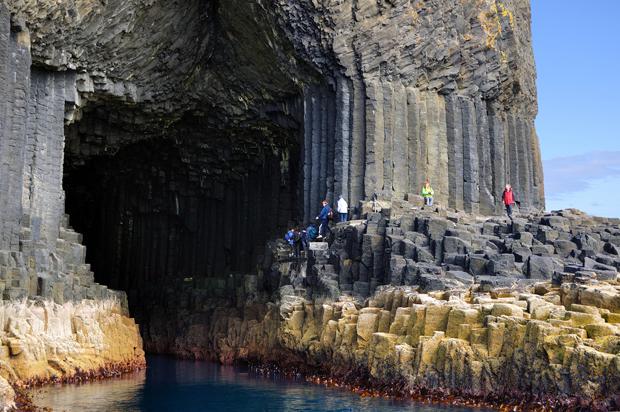
In Fingal's Cave is a narrow trail, surrounded by magnificent basalt colonnade. The passage of the cave so narrow that to get there by boat nevozmozhno.
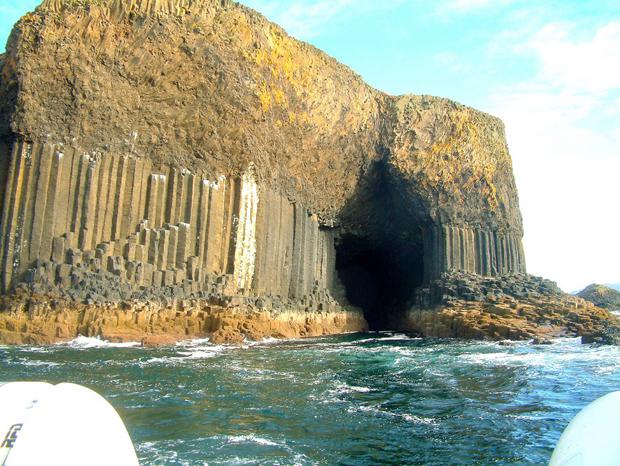
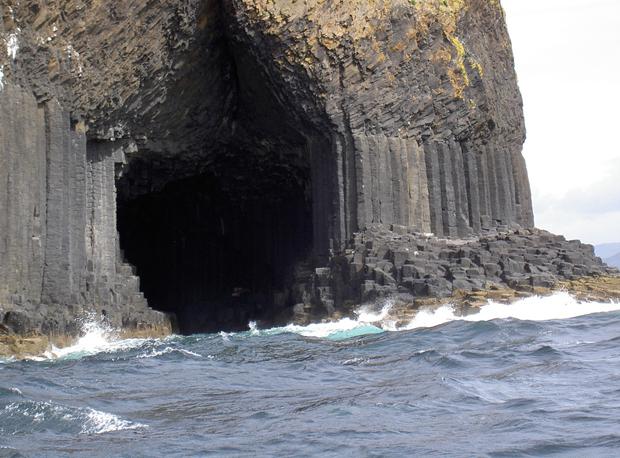
The huge hall of the cave repeatedly repeats the sounds of the surf, and the whole cave literally sings, justifying its ancient name Uamh-Binn - "Singing cave" .

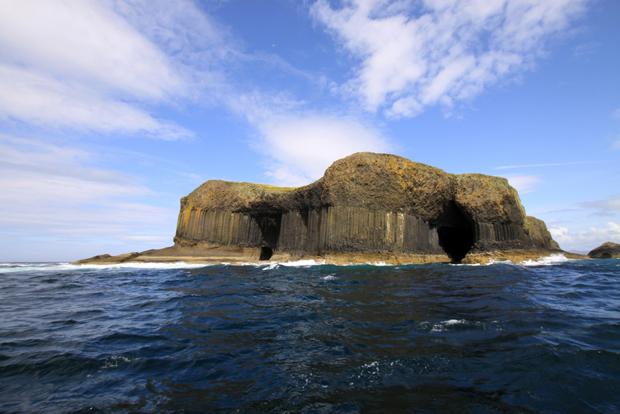
After in 1722 the naturalist Joseph Banks described Fingal's Cave, was visited by Queen Victoria, Sir Walter Scott, William Wordsworth, John Keats, Alfred Tennyson, and Jules Verne himself. In 1832, the artist Joseph Turner wrote the landscape, which captured the now famous pescheru.
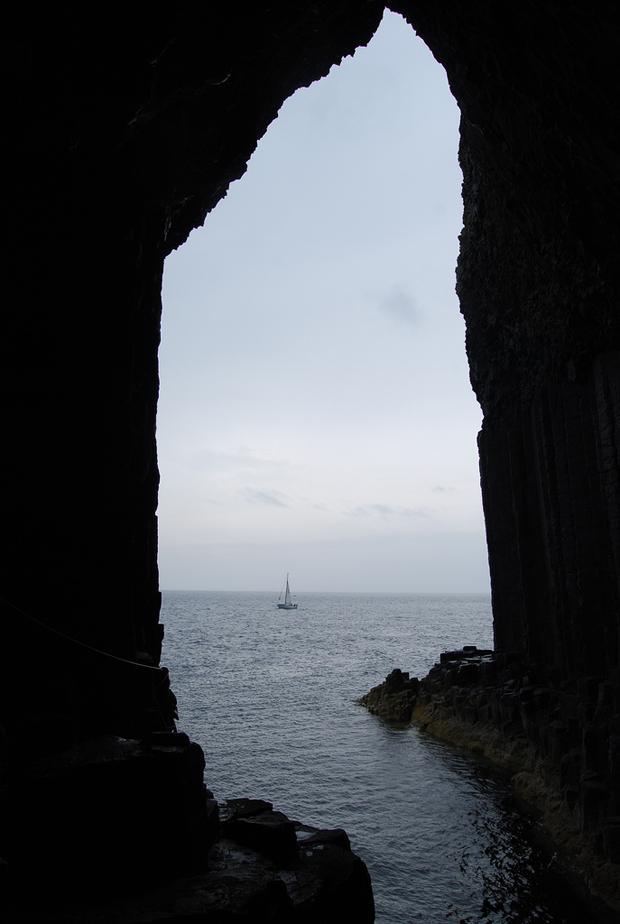
When the composer Felix Mendelssohn (author of the famous Wedding March) in 1829 visited the cave, he was so impressed by the amazing play of echo in the halls of her, that it inspired him to create the overture titled "The Hebrides or Fingal's Cave» .
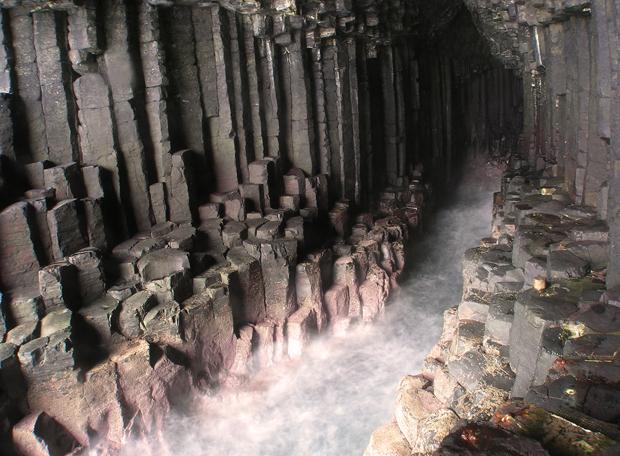
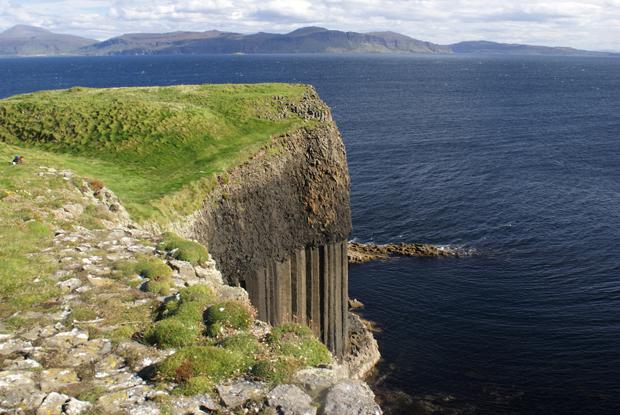
Fingal (the name can be translated as "White Wanderer") - one of the favorite characters of Celtic epic. According to one legend he was about to fight the formidable giant Benandonnerom, built a huge bridge-dam, and lay down to rest before the battle. While he slept, the giant in search of the enemy himself came over the bridge to his house. But the wife of Fingal Unah deceived giant. She pointed to the sleeping Fingal, covered with a blanket, and said that it was his newborn son, and that of Fingal house is not available. Seeing the giant "baby" giant experienced such horror that ran, breaking for a dambu.
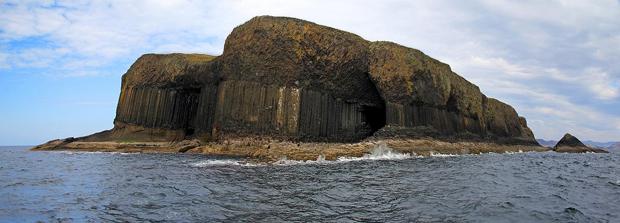
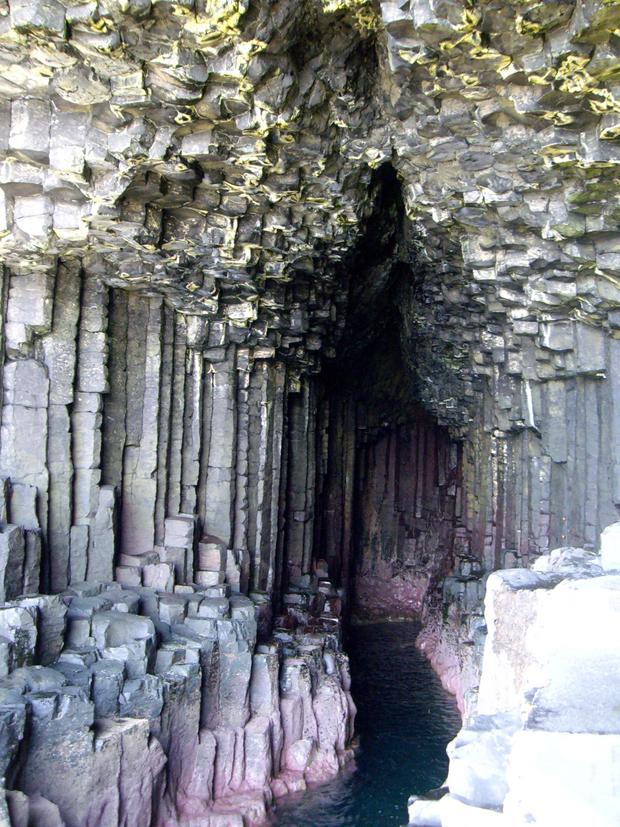
There are several versions of this legend, but every time she finishes a cowardly escape enemy Fingal and the destruction of the dam. Magnificent basalt columns, according to the legend - the remains of piles driven into the bottom of the Irish Sea Fingalom.
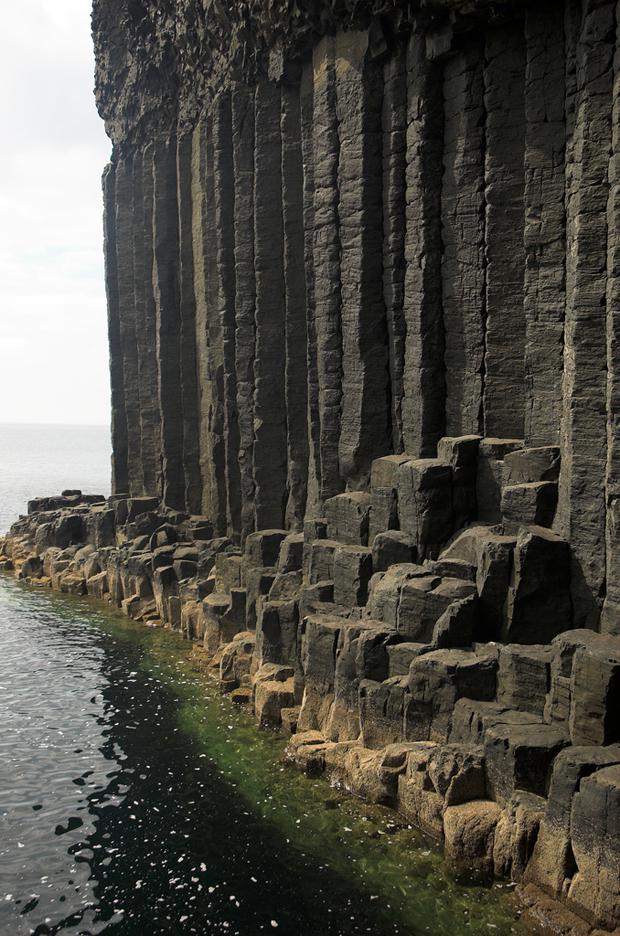
Fingal's Cave - is not the only place where there are such amazing basalt columns. About 40 000 of them related to each other to form columns Giant's Causeway (who also was part of the dam, built Fingal) in the coastal area of County Antrim, located in the north-east of Ireland.
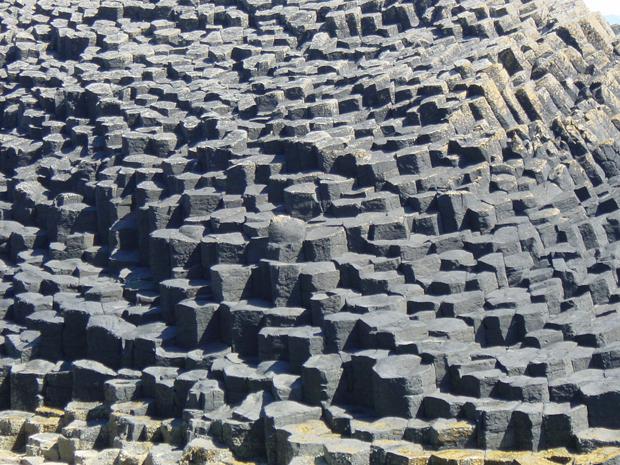
See also: Unusual colorful lake. Salinas Grandes - a snow-white desert of Argentina. In Algeria, there is a lake, where instead of water - ink.
Source: mirfactov.com/
